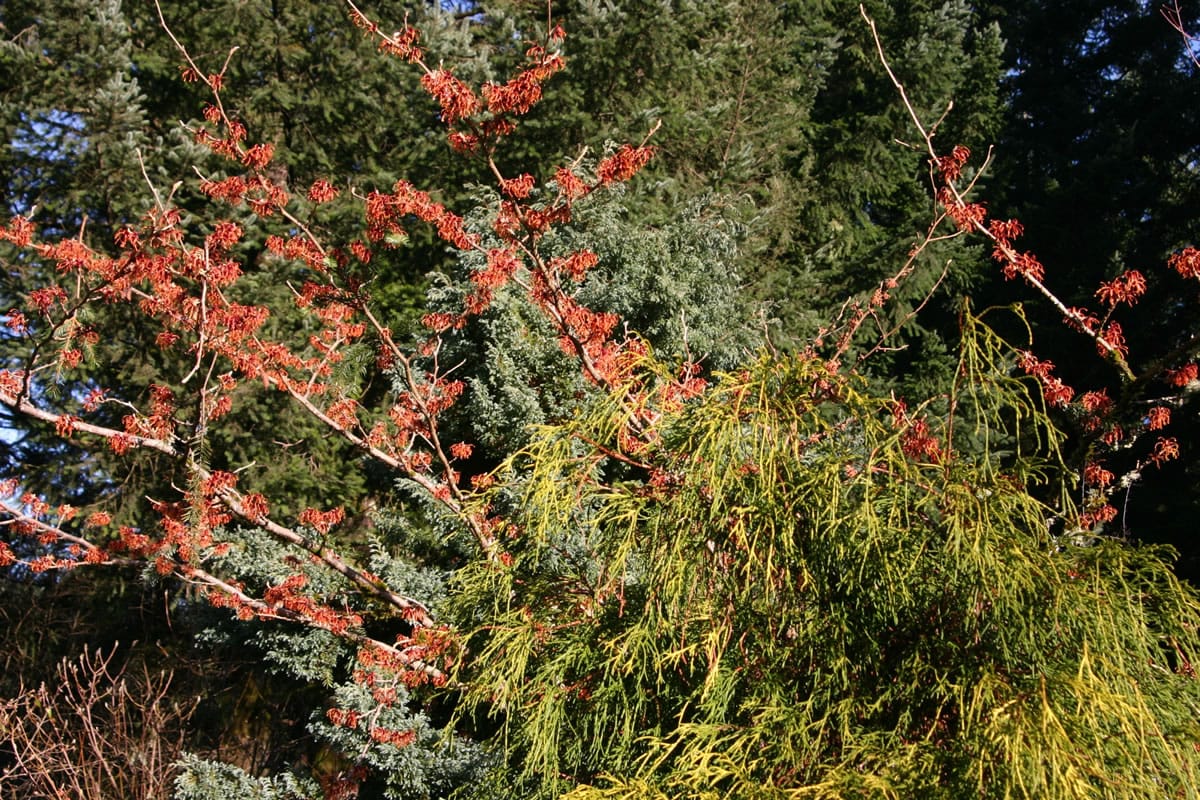Even the sound of the word, Thanksgiving, appeals to me. My penchant for searching the dictionary to help me understand the true meaning of a word leads me to the following definitions. Thanksgiving: 1. the act of giving thanks; grateful acknowledgment of benefits or favors, especially to God; 2. an expression of thanks, especially to God; 3. a public celebration in acknowledgment of divine favor or kindness.
In a mild winter, the Sasanqua camellia will begin to bloom within in December. In the coldest of winters, I have found that the buds refuse to open quite so early, as if holding out for a sign of mercy from Mother Nature. Either way, these winter-blooming camellias will grace us with their richly textured flowers long before most other plants dare to bloom. Yuletide is a wonderful variety for the entry garden. With single red flowers, bright yellow anthers and deep evergreen foliage, this plant fits perfectly into the holiday decorating scheme.
Viburnum Pink Dawn will flower in early winter, even after every leaf falls from the shrub. The tiny clusters of reversed, bell-shaped flowers pop directly out of bare branches. The sugary scent reminds me of cotton candy and the flowers are the exact color of that same pink concoction. The Witch Hazel (Hamamelis intermedia or mollis) also blooms in winter. I remember the common name because of the shape of its metallic, bronze-yellow flowers. Like gnarled witches hands, the spindly finger-like petals reach out of bare wood in defiance of the coldest weather of the year.
If you have a collection of plants in pots, especially large plants such as trees, shrubs and mixed perennial plantings, invest in a durable, heavyweight furniture dolly. I find this item an indispensable tool in my garden, especially in this season when plants are moved from porches and decks to a more sheltered location. It’s the safest way to move over-sized ceramic pots. Not only do you avoid lifting heavy pots and planters off the ground and into a wheelbarrow or wagon but you can maneuver into tight spaces easily.



